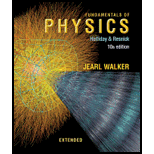
Fundamentals of Physics Extended
10th Edition
ISBN: 9781118230725
Author: David Halliday, Robert Resnick, Jearl Walker
Publisher: Wiley, John & Sons, Incorporated
expand_more
expand_more
format_list_bulleted
Concept explainers
Textbook Question
Chapter 16, Problem 30P
Use the wave equation to find the speed of a wave given in terms of the general function h(x, t):
y(x, t) = (4.00 mm) h[(30 m−1)x + (6.0 s−1)t].
Expert Solution & Answer
Want to see the full answer?
Check out a sample textbook solution
Chapter 16 Solutions
Fundamentals of Physics Extended
Ch. 16 - Prob. 1QCh. 16 - Prob. 2QCh. 16 - Prob. 3QCh. 16 - Prob. 4QCh. 16 - Prob. 5QCh. 16 - The amplitudes and phase differences for four...Ch. 16 - Prob. 7QCh. 16 - a If a standing wave on a siring is given by y't =...Ch. 16 - Prob. 9QCh. 16 - If you set up the seventh harmonic on a string, a...
Ch. 16 - Prob. 11QCh. 16 - If a wave yx, t = 6.0mm sinkx 600 rad/st ...Ch. 16 - Prob. 2PCh. 16 - A wave has an angular frequency of 110 rad/s and a...Ch. 16 - Prob. 4PCh. 16 - A sinusoidal wave travels along a string. The time...Ch. 16 - Prob. 6PCh. 16 - A transverse sinusoidal wave is moving along a...Ch. 16 - Prob. 8PCh. 16 - Prob. 9PCh. 16 - The equation of a transverse wave traveling along...Ch. 16 - Prob. 11PCh. 16 - GO The function yx, t = 15.0 cm cosx 15 t, with x...Ch. 16 - Prob. 13PCh. 16 - The equation of a transverse wave on a string is y...Ch. 16 - Prob. 15PCh. 16 - The speed of a transverse wave on a string is 170...Ch. 16 - The linear density of a string is 1.6 104 kg/m. A...Ch. 16 - Prob. 18PCh. 16 - SSM What is the speed of a transverse wave in a...Ch. 16 - The tension in a wire clamped at both ends is...Ch. 16 - ILW A 100 g wire is held under a tension of 250 N...Ch. 16 - A sinusoidal wave is traveling on a string with...Ch. 16 - SSM ILW A sinusoidal transverse wave is traveling...Ch. 16 - Prob. 24PCh. 16 - A uniform rope of mass m and length L hangs from a...Ch. 16 - A string along which waves can travel is 2.70 m...Ch. 16 - Prob. 27PCh. 16 - Use the wave equation to find the speed of a wave...Ch. 16 - Use the wave equation to find the speed of a wave...Ch. 16 - Use the wave equation to find the speed of a wave...Ch. 16 - Prob. 31PCh. 16 - What phase difference between two identical...Ch. 16 - Prob. 33PCh. 16 - Prob. 34PCh. 16 - SSM Two sinusoidal waves of the same frequency...Ch. 16 - Four waves are to be sent along the same string,...Ch. 16 - GO These two waves travel along the same string:...Ch. 16 - Two sinusoidal waves of the same frequency are to...Ch. 16 - Two sinusoidal waves of the same period, with...Ch. 16 - Two sinusoidal waves with identical wavelengths...Ch. 16 - Prob. 41PCh. 16 - Prob. 42PCh. 16 - SSM WWW What are a the lowest frequency, b the...Ch. 16 - A 125 cm length of string has mass 2.00 g and...Ch. 16 - Prob. 45PCh. 16 - String A is stretched between two clamps separated...Ch. 16 - Prob. 47PCh. 16 - If a transmission line in a cold climate collects...Ch. 16 - Prob. 49PCh. 16 - Prob. 50PCh. 16 - Prob. 51PCh. 16 - A rope, under a tension of 200 N and fixed at both...Ch. 16 - Prob. 53PCh. 16 - Prob. 54PCh. 16 - GO The following two waves are sent in opposite...Ch. 16 - A standing wave pattern on a string is described...Ch. 16 - A generator at one end of a very long string...Ch. 16 - GO In Fig. 16-42, a string, tied to a sinusoidal...Ch. 16 - GO In Fig. 16-43, an aluminum wire, of length L1 =...Ch. 16 - Prob. 60PCh. 16 - Prob. 61PCh. 16 - Prob. 62PCh. 16 - A wave has a speed of 240 m/s and a wavelength of...Ch. 16 - The equation of a transverse wave traveling alone...Ch. 16 - The equation of a transverse wave traveling along...Ch. 16 - Prob. 66PCh. 16 - Prob. 67PCh. 16 - Prob. 68PCh. 16 - Prob. 69PCh. 16 - Prob. 70PCh. 16 - A transverse sinusoidal wave is generated at one...Ch. 16 - Prob. 72PCh. 16 - Prob. 73PCh. 16 - Prob. 74PCh. 16 - a What is the fastest transverse wave that can be...Ch. 16 - A standing wave results from the sum of two...Ch. 16 - Prob. 77PCh. 16 - Prob. 78PCh. 16 - Prob. 79PCh. 16 - When played in a certain manner, the lowest...Ch. 16 - A sinusoidal transverse wave traveling in the...Ch. 16 - Two sinusoidal waves of the same wavelength travel...Ch. 16 - Prob. 83PCh. 16 - Prob. 84PCh. 16 - Prob. 85PCh. 16 - a Write an equation describing a sinusoidal...Ch. 16 - A wave on a string is described by yx, t = 15.0...Ch. 16 - Prob. 88PCh. 16 - Two waves are described by...Ch. 16 - Prob. 90PCh. 16 - SSM In a demonstration, a 1.2 kg horizontal rope...Ch. 16 - Prob. 92PCh. 16 - A traveling wave on a string is described by...Ch. 16 - Prob. 94PCh. 16 - Prob. 95PCh. 16 - Consider a loop in the standing wave created by...
Additional Science Textbook Solutions
Find more solutions based on key concepts
34. Find the maximum possible coefficient of performance for a heat pump used to heat a house in a northerly cl...
College Physics: A Strategic Approach (4th Edition)
The speed of an electron.
Physics: Principles with Applications
35. The brightest star in the sky, Sirius, is about 8 light-years from Earth. Show that if you could somehow tr...
Conceptual Physical Science (6th Edition)
About how many floating-point operations can a supercomputer perform each year?
University Physics Volume 1
35. The coefficient of static friction is 0.60 between the two blocks in FIGURE P7.35. The coefficient of kinet...
Physics for Scientists and Engineers: A Strategic Approach, Vol. 1 (Chs 1-21) (4th Edition)
Why does water in a stream typically move slower as it nears the ocean?
Conceptual Integrated Science
Knowledge Booster
Learn more about
Need a deep-dive on the concept behind this application? Look no further. Learn more about this topic, physics and related others by exploring similar questions and additional content below.Similar questions
- A sound wave in air has a pressure amplitude equal to 4.00 103 Pa. Calculate the displacement amplitude of the wave at a frequency of 10.0 kHz.arrow_forwardA taut rope has a mass of 0.180 kg and a length of 3.60 m. What power must be supplied to the rope so as to generate sinusoidal waves having an amplitude of 0.100 m and a wavelength of 0.500 m and traveling with a speed of 30.0 m/s?arrow_forwardThe amplitude of a wave is doubled, with no other changes made to the wave. As a result of this doubling, which of the following statements is correct? (a) The speed of the wave changes. (b) The frequency of the wave changes. (c) The maximum transverse speed of an element of the medium changes. (d) Statements (a) through (c) are all true. (e) None of statements (a) through (c) is true.arrow_forward
- The equation of a harmonic wave propagating along a stretched string is represented by y(x, t) = 4.0 sin (1.5x 45t), where x and y are in meters and the time t is in seconds. a. In what direction is the wave propagating? be. N What are the b. amplitude, c. wavelength, d. frequency, and e. propagation speed of the wave?arrow_forwardRank the waves represented by the following functions from the largest to the smallest according to (i) their amplitudes, (ii) their wavelengths, (iii) their frequencies, (iv) their periods, and (v) their speeds. If the values of a quantity are equal for two waves, show them as having equal rank. For all functions, x and y are in meters and t is in seconds. (a) y = 4 sin (3x 15t) (b) y = 6 cos (3x + 15t 2) (c) y = 8 sin (2x + 15t) (d) y = 8 cos (4x + 20t) (e) y = 7 sin (6x + 24t)arrow_forwardA sound wave can be characterized as (a) a transverse wave, (b) a longitudinal wave, (c) a transverse wave or a longitudinal wave, depending on the nature of its source, (d) one that carries no energy, or (e) a wave that does not require a medium to be transmitted from one place to the other.arrow_forward
- Two traveling sinusoidal waves are described by the wave functions y1 = 5.00 sin [(4.00x 1 200t)] y2 = 5.00 sin [(4.00x 1 200t 0.250)] where x, y1 and y2 are in meters and t is in seconds. (a) What is the amplitude of the resultant wave function y1 + y2? (b) What is the frequency of the resultant wave function?arrow_forwardA string with a mass of 0.30 kg has a length of 4.00 m. If the tension in the string is 50.00 N, and a sinusoidal wave with an amplitude of 2.00 cm is induced on the string, what must the frequency be for an average power of 100.00 W?arrow_forwardTwo sinusoidal waves are moving through a medium in the same direction, both having amplitudes of 3.00 cm, a wavelength of 5.20 m, and a period of 6.52 s, but one has a phase shift of an angle . What is the phase shift if the resultant wave has an amplitude of 5.00 cm? [Hint: Use the trig identity sinu+sinv=2sin(u+v2)cos(uv2)arrow_forward
- By what factor would you have to multiply the tension in a stretched string so as to double the wave speed? Assume the string does not stretch. (a) a factor of 8 (b) a factor of 4 (c) a factor of 2 (d) a factor of 0.5 (e) You could not change the speed by a predictable factor by changing the tension.arrow_forwardA cable with a linear density of =0.2 kg/m is hung from telephone poles. The tension in the cable is 500.00 N. The distance between poles is 20 meters. The wind blows across the line, causing the cable resonate. A standing waves pattern is produced that has 4.5 wavelengths between the two poles. The air temperature is T=20C . What are the frequency and wavelength of the hum?arrow_forwardAt t = 0, a transverse pulse in a wire is described by the function y=6.00x2+3.00 where xand y are in meters. If the pulse is traveling in the positive x direction with a speed of 4.50 m/s, write the function y(x, t) that describes this pulse.arrow_forward
arrow_back_ios
SEE MORE QUESTIONS
arrow_forward_ios
Recommended textbooks for you
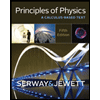 Principles of Physics: A Calculus-Based TextPhysicsISBN:9781133104261Author:Raymond A. Serway, John W. JewettPublisher:Cengage Learning
Principles of Physics: A Calculus-Based TextPhysicsISBN:9781133104261Author:Raymond A. Serway, John W. JewettPublisher:Cengage Learning Physics for Scientists and Engineers, Technology ...PhysicsISBN:9781305116399Author:Raymond A. Serway, John W. JewettPublisher:Cengage Learning
Physics for Scientists and Engineers, Technology ...PhysicsISBN:9781305116399Author:Raymond A. Serway, John W. JewettPublisher:Cengage Learning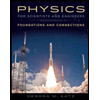 Physics for Scientists and Engineers: Foundations...PhysicsISBN:9781133939146Author:Katz, Debora M.Publisher:Cengage Learning
Physics for Scientists and Engineers: Foundations...PhysicsISBN:9781133939146Author:Katz, Debora M.Publisher:Cengage Learning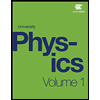 University Physics Volume 1PhysicsISBN:9781938168277Author:William Moebs, Samuel J. Ling, Jeff SannyPublisher:OpenStax - Rice University
University Physics Volume 1PhysicsISBN:9781938168277Author:William Moebs, Samuel J. Ling, Jeff SannyPublisher:OpenStax - Rice University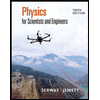 Physics for Scientists and EngineersPhysicsISBN:9781337553278Author:Raymond A. Serway, John W. JewettPublisher:Cengage Learning
Physics for Scientists and EngineersPhysicsISBN:9781337553278Author:Raymond A. Serway, John W. JewettPublisher:Cengage Learning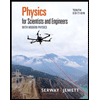 Physics for Scientists and Engineers with Modern ...PhysicsISBN:9781337553292Author:Raymond A. Serway, John W. JewettPublisher:Cengage Learning
Physics for Scientists and Engineers with Modern ...PhysicsISBN:9781337553292Author:Raymond A. Serway, John W. JewettPublisher:Cengage Learning

Principles of Physics: A Calculus-Based Text
Physics
ISBN:9781133104261
Author:Raymond A. Serway, John W. Jewett
Publisher:Cengage Learning

Physics for Scientists and Engineers, Technology ...
Physics
ISBN:9781305116399
Author:Raymond A. Serway, John W. Jewett
Publisher:Cengage Learning

Physics for Scientists and Engineers: Foundations...
Physics
ISBN:9781133939146
Author:Katz, Debora M.
Publisher:Cengage Learning

University Physics Volume 1
Physics
ISBN:9781938168277
Author:William Moebs, Samuel J. Ling, Jeff Sanny
Publisher:OpenStax - Rice University

Physics for Scientists and Engineers
Physics
ISBN:9781337553278
Author:Raymond A. Serway, John W. Jewett
Publisher:Cengage Learning

Physics for Scientists and Engineers with Modern ...
Physics
ISBN:9781337553292
Author:Raymond A. Serway, John W. Jewett
Publisher:Cengage Learning
SIMPLE HARMONIC MOTION (Physics Animation); Author: EarthPen;https://www.youtube.com/watch?v=XjkUcJkGd3Y;License: Standard YouTube License, CC-BY